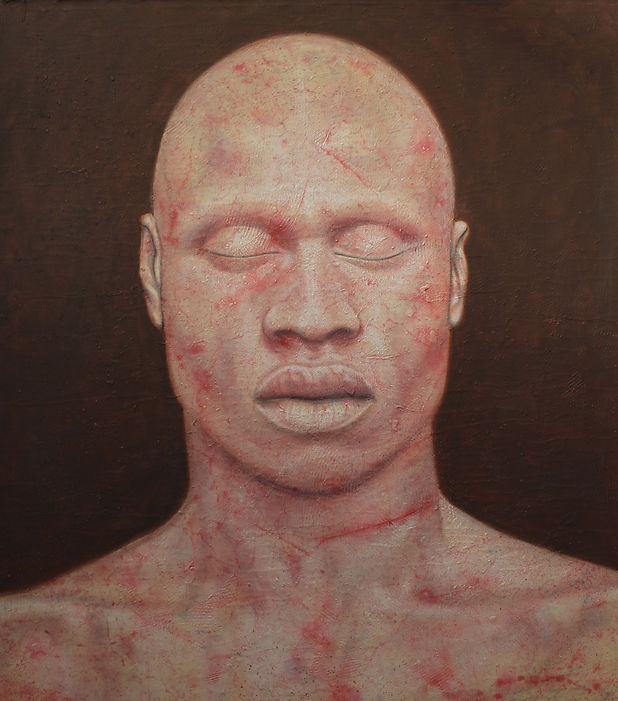Royal Blue
Gallery

Bruno Dufour-Coppolani
Bruno Dufour-Coppolani was born on 9 June 1954 in Périers, Manche, in the North-western part of Normandy.
He followed a technical studies programme and obtained a Technical Degree in Mechanical Engineering from Rennes University in 1974.
Once back in France, Bruno Dufour-Coppolani enrolled in the Fine Arts School of Rouen and, simultaneously, studied Plastic Arts at the University Paris I, Sorbonne. These artistic studies lead him to examine the interaction between painting and the support. From then on, his artistic work focused on demystifying the imagination in painting by recalling the physical nature of the support. Various exhibitions held at the Conseil Général de la Manche, Le Botanique in Brussels, Jeune Peinture Salon Show in Paris, the University of Roanoake, Virginia, the Alex Gallery in Washington, the Whole Gallery in Baltimore, and participation in the Fiac (OFF)ICIELLE with the PvonK Gallery in Berlin to name a few, propelled him to embark on a demanding, continuous and coherent approach to examining plastic phenomena and the wearing and engraving of non-allegorical time on his works. Currently, he is exploring the question of skin in an attempted renewal of portrait work.
Bruno Dufour-Coppolani is married and is father to two children, Mathilde and Paul.
EDUCATION
1998 Agrégation (teaching qualification) in the Plastic Arts
1982 Diplôme National Supérieur (postgraduate degree) in Fine Arts
1974 Diplôme Universitaire et Technologique (HND) in Mechanical Engineering

Rene, 2006
Acrylic and sand on canvas,
231 x 171cm

Rene, detail
JUDITH, 2020
Acrylic and sand on canvas,
234 x 173 cm


CHEVET, 2010
Acrylic and sand on canvas,
225 x177cm
Jeanne, 2008
Acrylic and sand on canvas,
213 x 174cm


Après Mapplethorpe I, 2008
Acrylic and sand on canvas,
216 x 180cm
Après Zurbaran,
Acrylic and sand on canvas


Angel Skin, 2018
Acrylic and sand on canvas,
157 x 81 cm
Die Haut, after Beuys, 2018
Acrylic and sand on canvas,
234 x 117 cm

Project Description
The experience of the skin
“What if what we refuse to see would be what we should see ?”
As the skin is, the painting is a depth which make sense through its surface, says Bruno
Dufour-Coppolani. Questionning the surface, he questionned the painting in its mere
depth. And he made the choice of the tradition of portrait, not for its formal twilight, but for
the incredible experience of the skin. It is through the skin the body is expressing, not
through the flesh. He knows that showing the skin, he opens access to the becoming,
more than to the form. He makes the painting becoming mortal. Haunted by the finiteness,
his work is an echo of the question of the representation. Through the accidents of the
surface of the skin, he tries to show us in what the portrait should be, nowadays.
Through sanding the canvas, sedimentation...and many other process, the painter is
becoming an alchimist. He is questionning the accidents and combinations of the physics,
with its uncertainty, its movements of the pigments, its materials and its transparency. The
surface itself is threatened to make what threatens the body sensitive. The pictorial
reactions become cutaneous reactions. Mortal to be more real, these surfaces are
shown to a dermatologist for assessments...
But, beyond the clinical worries attentions, Bruno Dufour Coppolani’s painting remain
crossings of gazes, reminders, face to face, attentions, threatening beauty...That is to say
a real meeting.
